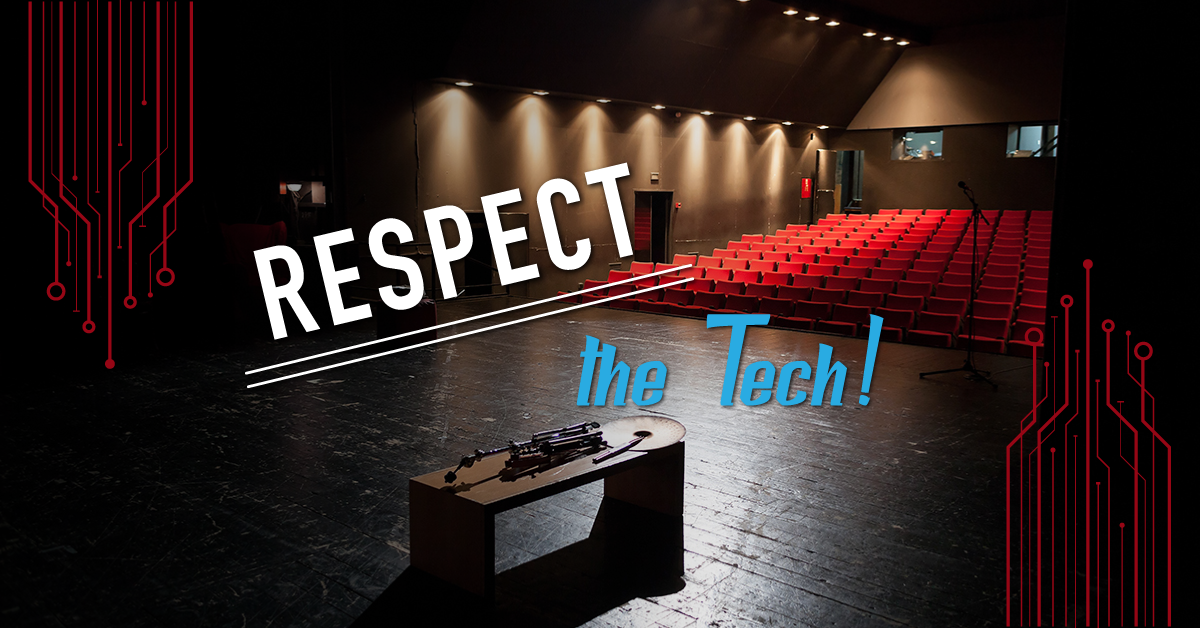Tech Exercises for the Non-Technical Teacher
The phrase “technical theatre” can be intimidating for some drama teachers. They may feel that they don’t have adequate experience to teach technical theatre, or that they just aren’t “tech-y” enough to succeed in this area. Some teachers may also have a less-than-idea technical theatre situation in their school, due to budget restraints or lack of funding, outdated or non-existent technical equipment and technological resources, or unfortunate theatrical spaces (cafegymatorium, anyone?).
However, technical theatre does not have to be intimidating, expensive, or state-of-the-art. Here are 15 examples of simple technical theatre exercises that you can do with your class. They don’t require a lot of equipment or extensive technical theatre knowledge – they’re more focused on using found materials and resources, a dash of willingness to experiment, and a dollop of creativity. They’re a lot of fun, too!
1. Have your students find and share YouTube clips of a scene from a movie, a television show, or a filmed theatre production that has interesting lighting. Discuss – what is interesting about the lighting? What made it stand out to you? How do you think they achieved that effect? How could you recreate that kind of lighting in your classroom or performance space?
2. Light a scene using only found lighting – overhead lights, cell phone lights, flashlights, light from a projector, fake candles, light from a window, etc.
3. Create a playlist of ten songs inspired by a play or musical that would be appropriate to use as pre-show or intermission music. For example, if your students are creating a playlist for a production of The Wedding Singer, they might choose popular wedding songs from 1985. However, students can’t use any music that is actually from the play or musical!
4. Create a soundscape, radio play style for a scene, using found objects within the classroom.
5. Use shoe boxes, popsicle sticks, magazine cutouts, and other craft materials to create diorama-style 3D scale model set designs.
6. Partner with the visual art teacher at your school and have them teach your students different scenic painting techniques, such as creating wood grain, brickwork, sand and stone effects with paint.
7. Create a costume colour palette for a show you’re studying. Have students explain how the colours they chose demonstrate different moods or character statuses.
8. Create a costume vision board for a show you’re studying. Divide students into small groups and assign each group a different character from the show.
9. Challenge students to show a character using only one costume piece. What costume piece would they choose and why? Take this challenge a step further and have students create or acquire the costume piece. Have one student model the piece for the rest of the class. (The rest of the costume should be basic black clothing pieces.)
10. Have students learn and practice how to take proper costume measurements.
11. Create and/or design a method for an organized props area. Use your own theatre space as a model and have students figure out the most effective use of the space.
12. Create a master props list for a show you’re studying. If you’re actually doing a school production, give the list to the props head to save them time!
13. Have students design makeup looks for a play you’re studying, using a blank face template. Take it a step further and have students try to create the makeup looks on each other with actual makeup.
14. Find three different recipes for stage blood and test them on different kinds of fabric to see which recipe is most realistic-looking and which one washes out the best.
15. Try the following exercises here on the Theatrefolk blog – all instructions included!
- Found Objects
- Respect the Tech!
- Create a Program for Your Production
- Costume Quick Change & Prop Switch
Don’t forget to check out the Drama Teacher Academy for even more technical theatre lesson plans and classroom resources, as well as professional development courses to increase your technical theatre knowledge, skills, and confidence.



